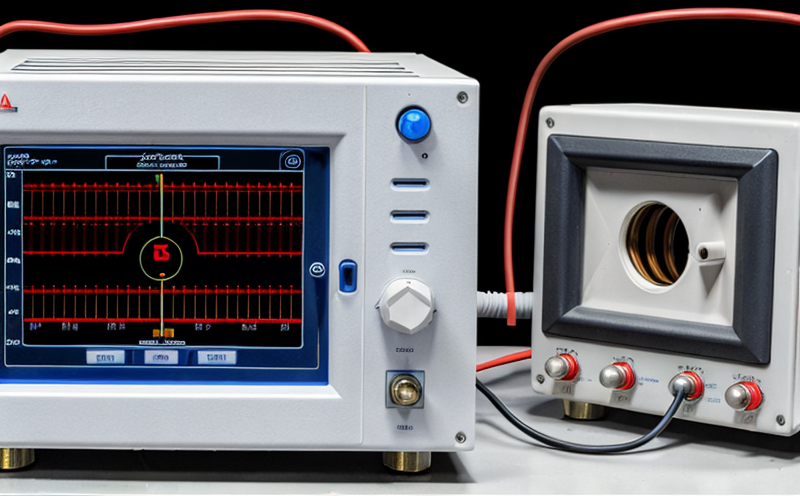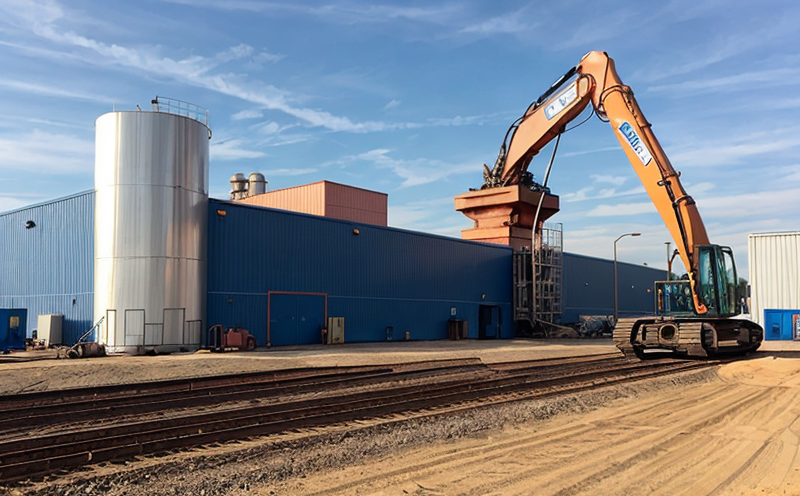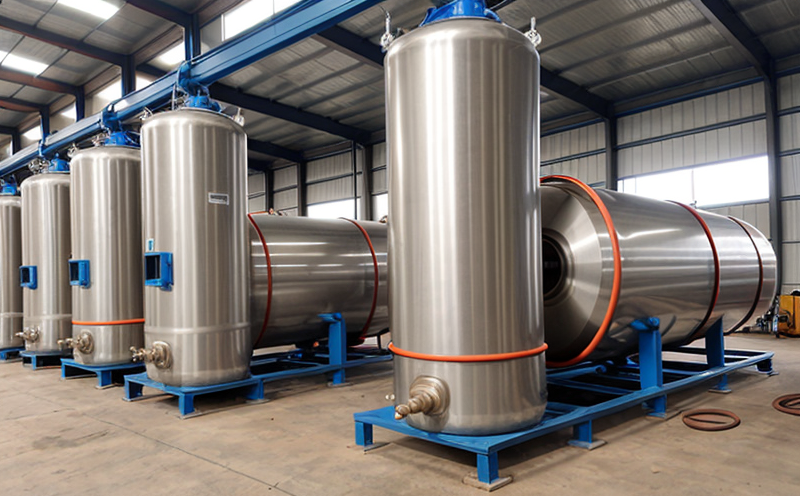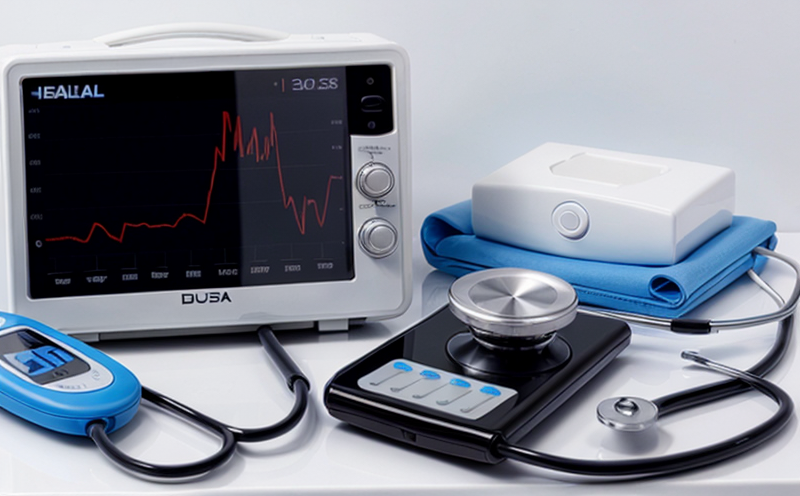
-
Energy and Sustainability Standards-
Energy Performance Contracting-
Risks and Benefits of Energy Performance Contracting
We provide comprehensive solutions designed to help our clients mitigate risks, enhance performance, and excel in key areas such as quality, health & safety, environmental sustainability, and social responsibility.
Discover
For many years, our organization has been operating successfully, boasting modern laboratories that meet international standards. These laboratories are equipped with the latest technology devices and equipment, and we have built a strong team of experienced and trained personnel to operate them.
DiscoverWelcome to Eurolab, your partner in pioneering solutions that encompass every facet of life. We are committed to delivering comprehensive Assurance, Testing, Inspection, and Certification services, empowering our global clientele with the ultimate confidence in their products and processes.
Discover
-
Energy and Sustainability Standards-
Energy Performance Contracting-
Risks and Benefits of Energy Performance ContractingEnergy Performance Contracting (EPC) has become a widely adopted model for implementing energy efficiency projects, allowing organizations to improve their energy performance without incurring significant upfront capital expenditures. Instead, financing is provided through the future savings generated by energy-efficient upgrades. While EPC offers numerous advantages, it also carries certain risks. Understanding these risks and benefits is essential for both building owners and Energy Service Companies (ESCOs) involved in such agreements.
In this article, we will examine both the risks and benefits of EPC, providing a balanced view of this energy-saving financing model.
EPC offers numerous advantages to both building owners and ESCOs, making it an attractive option for energy efficiency improvements. These benefits range from financial flexibility to long-term energy savings and sustainability goals.
1. No Upfront Capital Investment
One of the most compelling benefits of EPC is that it allows organizations to implement energy-saving measures without the need for significant upfront capital. This is particularly valuable for organizations with limited access to funding or for those that wish to allocate capital elsewhere. The cost of the energy-efficient upgrades is repaid over time from the energy savings generated by the improvements.
2. Guaranteed Energy Savings
A hallmark of EPC is the performance guarantee provided by the ESCO. This guarantee ensures that the energy savings achieved from the implemented measures will meet or exceed the projected levels. If the savings fall short, the ESCO typically compensates the building owner for the difference, mitigating financial risk.
3. Improved Cash Flow and Reduced Operating Costs
The energy savings generated by the EPC project are used to finance the cost of the improvements. Over time, these savings often exceed the cost of repayment, resulting in net financial benefits. This leads to a reduction in overall operating costs for the building owner.
4. Long-Term Energy Savings
EPC typically focuses on achieving long-term energy savings through the implementation of high-performance, energy-efficient solutions. By reducing energy consumption and increasing efficiency, organizations can lower their energy bills for many years to come.
5. Environmental Benefits and Sustainability
Implementing energy-efficient measures through EPC can significantly reduce a building’s environmental footprint. This is particularly beneficial for organizations aiming to meet sustainability targets or comply with regulatory environmental standards.
6. Increased Property Value
Energy-efficient buildings are more attractive to tenants, investors, and potential buyers. By improving energy performance, EPC can increase the value of a property, making it a more competitive asset in the real estate market.
While EPC offers many advantages, it is not without its risks. Both building owners and ESCOs must carefully consider these risks before entering into an EPC agreement.
1. Overestimated Energy Savings
One of the primary risks of EPC is the potential for overestimated energy savings. If the energy-saving measures do not deliver the expected results, the financial structure of the EPC agreement may not hold up, and the building owner could face higher-than-expected operating costs.
2. Long-Term Contractual Obligations
EPC contracts typically span a period of 5 to 20 years. This long-term commitment can pose risks for building owners who may face changes in their operational needs, building usage, or ownership during this time.
3. Complexity of M&V (Monitoring and Verification)
Accurate M&V is essential for determining the success of an EPC project. However, monitoring and verifying energy savings can be complex, especially if external factors (such as weather conditions or operational changes) impact energy use. Inaccurate M&V can lead to disputes and complications in repayment.
4. Unforeseen Operational or Structural Changes
Changes in the building’s operational conditions, such as a shift in occupancy or usage patterns, can impact energy consumption. These changes may lead to discrepancies between projected savings and actual performance, complicating the energy savings verification process.
5. Difficulty in Financing Large Projects
For larger projects, financing the upfront costs of energy-efficient upgrades can be challenging, especially if external financing is required. If financing cannot be secured or if interest rates rise, it could impact the feasibility of the EPC project.
6. Performance Risks
The success of an EPC project is dependent on the performance of the installed energy-efficient systems. If these systems fail to operate as expected, the building owner may not experience the anticipated energy savings, leading to dissatisfaction and possible contract disputes.
Energy Performance Contracting (EPC) offers significant benefits, including reduced capital investment, guaranteed energy savings, and long-term cost reductions, making it an attractive option for organizations seeking to improve energy efficiency. However, EPC also carries risks, such as the potential for overestimated savings, long-term contractual commitments, and the complexity of monitoring and verifying energy performance.
Both building owners and ESCOs must carefully weigh these risks and benefits before entering into an EPC agreement. By selecting the right energy-saving measures, ensuring accurate M&V, and structuring the contract to address potential risks, both parties can maximize the advantages of EPC while minimizing financial and operational risks.

Consumer Product Safety
Consumer Product Safety: Protecting Consumers from Harmful Products As a consumer, you have the rig...

Transportation and Logistics Certification
Transportation and Logistics Certification: A Comprehensive Guide The transportation and logistics ...

Product and Retail Standards
Product and Retail Standards: Ensuring Quality and Safety for Consumers In todays competitive marke...

Environmental Simulation Testing
Environmental Simulation Testing: A Comprehensive Guide In todays world, where technology is rapidl...

Fire Safety and Prevention Standards
Fire Safety and Prevention Standards: Protecting Lives and Property Fire safety and prevention stan...

Electrical and Electromagnetic Testing
Electrical and Electromagnetic Testing: A Comprehensive Guide Introduction Electrical and electrom...

MDR Testing and Compliance
MDR Testing and Compliance: A Comprehensive Guide The Medical Device Regulation (MDR) is a comprehe...

Electromechanical Safety Certification
Electromechanical Safety Certification: Ensuring Compliance and Protecting Lives In todays intercon...

Construction and Engineering Compliance
Construction and Engineering Compliance: Ensuring Safety, Quality, and Regulatory Adherence In the ...

NEBS and Telecommunication Standards
Network Equipment Building System (NEBS) and Telecommunication Standards The Network Equipment Bu...

IT and Data Center Certification
IT and Data Center Certification: Understanding the Importance and Benefits The field of Informatio...

Automotive Compliance and Certification
Automotive Compliance and Certification: Ensuring Safety and Efficiency The automotive industry is ...

Chemical Safety and Certification
Chemical safety and certification are critical in ensuring the safe management of products and proce...

Industrial Equipment Certification
Industrial equipment certification is a critical process that ensures industrial equipment meets spe...

Pressure Vessels and Installations Testing
Pressure Vessels and Installations Testing Pressure vessels are a critical component of various ind...

Pharmaceutical Compliance
Pharmaceutical compliance refers to the adherence of pharmaceutical companies and organizations to l...

Military Equipment Standards
Military Equipment Standards: Ensuring Effectiveness and Safety The use of military equipment is a ...

Food Safety and Testing
Food Safety and Testing: Ensuring the Quality of Our Food As consumers, we expect our food to be sa...

Battery Testing and Safety
Battery Testing and Safety: A Comprehensive Guide As technology continues to advance, battery-power...

Railway Industry Compliance
Railway Industry Compliance: Ensuring Safety and Efficiency The railway industry is a critical comp...

Hospitality and Tourism Certification
Hospitality and Tourism Certification: Unlocking Opportunities in the Industry The hospitality and ...

Energy and Sustainability Standards
In today’s rapidly evolving world, businesses face increasing pressure to meet global energy a...

Renewable Energy Testing and Standards
Renewable Energy Testing and Standards: Ensuring a Sustainable Future The world is rapidly transiti...

Aviation and Aerospace Testing
Aviation and Aerospace Testing: Ensuring Safety and Efficiency The aviation and aerospace industr...

Healthcare and Medical Devices
The Evolution of Healthcare and Medical Devices: Trends, Innovations, and Challenges The healthcare...

Lighting and Optical Device Testing
Lighting and Optical Device Testing: Ensuring Performance and Safety Lighting and optical devices a...

Cosmetic Product Testing
The Complex World of Cosmetic Product Testing The cosmetics industry is a multi-billion-dollar ma...

Trade and Government Regulations
Trade and government regulations play a vital role in shaping the global economy. These regulations ...

Agricultural Equipment Certification
Agricultural equipment certification is a process that ensures agricultural machinery meets specific...

Environmental Impact Assessment
Environmental Impact Assessment: A Comprehensive Guide Environmental Impact Assessment (EIA) is a c...